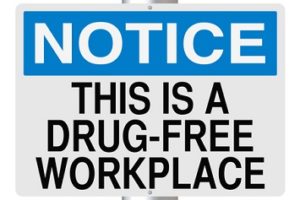At BLR’s Safety Summit 2018 in Orlando, Florida, attorney and safety expert Adele Abrams addressed a crowded room of attendees about the implications of OSHA’s 2016 electronic recordkeeping rule for employer safety incentives programs, disciplinary strategies, and post-accident drug testing policies.

OSHA’s Final Rule to Improve Tracking of Workplace Injuries and Illnesses, published in 2016, is primarily known for the obligations it created for certain employers to electronically submit injury and illness data to OSHA. However, the rule also included provisions that address employee involvement in the injury and illness recordkeeping process (29 CFR 1904.35) and protection against discrimination (29 CFR 1904.36). Although incentives, drug testing, and disciplinary policies are not mentioned by name in these provisions, guidance from OSHA makes clear that certain types of safety incentive programs, disciplinary strategies, and post-accident drug testing policies may constitute a violation.
Abrams noted that although the 2016 rule has been controversial since its publication, and in fact the electronic recordkeeping requirements have been limited in scope (at least temporarily), the antiretaliation provisions are in full effect. Moreover, unlike the electronic recordkeeping requirements, which affect only certain large and high-hazard establishments, all employers are covered by the employee involvement and antiretaliation provisions.
Employee Involvement
Under 29 CFR 1904.35, employers must have a reasonable procedure for employees to report work-related injuries and illnesses, and employees must be informed of this procedure. OSHA does not specify how to inform employees; however, according to Abrams, relying on the required OSHA “Safety and Health: It’s the Law” poster alone is likely insufficient.
Instead, employers would be prudent to provide and document training on injury reporting procedures. There is no specific documentation requirement, noted Abrams, but in the eyes of OSHA, “undocumented training never happened.”
Asked by an audience member whether the obligation to inform employees of injury reporting procedures extends to temporary workers, Abrams replied that in most cases, the answer is yes, particularly if a host employer is supervising the temporary workers’ day-to-day work activities and recording their injuries and illnesses on the OSHA 300 log. In other words, temporary workers should be included in training and communication about how to report work-related injuries and illnesses.
Protection Against Discrimination
The rule at 29 CFR 1904.36 states, “Section 11(c) of the OSH Act also prohibits you from discriminating against an employee for reporting a work-related fatality, injury, or illness. That provision of the Act also protects the employee who files a safety and health complaint, asks for access to the part 1904 records, or otherwise exercises any rights afforded by the OSH Act.”
According to Abrams, this language effectively expands the time limit for OSHA to examine whistleblower violations. Under Section 11(c) of the OSH Act, employees have 30 days to file a complaint if they believe they have been retaliated against for exercising a protected activity. By referencing Section 11(c) in 1904.36, OSHA makes retaliation for protected activity a recordkeeping violation, which is subject to a longer 6-month statute of limitations. Furthermore, Abrams emphasized, OSHA can now issue a citation for retaliation even if an employee does not file a complaint.
So what is “protected activity”? In addition to reporting an injury, protected activity includes raising safety and health concerns, talking to an OSHA inspector during an inspection, filing a complaint with OSHA or another regulatory agency, refusing to work because of actual or perceived hazards, and being medically removed under an OSHA standard such as lead exposure. Employers are prohibited from taking adverse action—which can include firing, demotion, shift or duty reassignment, reduction in pay, loss of overtime availability, transfer to a different worksite, and blacklisting—against an employee for engaging in any of these protected activities.
Discipline and Incentives
OSHA’s primary concern under its antiretaliation provisions is that employees who are faced with a negative outcome or the potential loss of a benefit will be less likely to report workplace injuries and illnesses. This is where safety incentive programs, disciplinary strategies, and drug testing policies come into play.
Disciplinary programs can be problematic if they are selectively applied against employees who are injured, noted Abrams. OSHA encourages employers to implement and enforce reasonable safety rules and policies, but the consequences for employees who violate these rules must be consistent regardless of outcome.
Abrams illustrated the point with an example of two employees who violate a rule requiring hard hats on the job site—a first offense for both workers. One experiences no injury and is verbally reprimanded. The second employee is struck by a falling object, experiences a concussion, and terminated for violating a company safety policy. OSHA would likely view this as retaliation and could issue a citation, since the injured worker experienced the more severe consequence for the same offense.
On the flip side, the key for incentive programs, noted Abrams, is that they should not be tied to lagging indicators such as injury and illness rates, days without an accident, or similar measures. If employees believe that reporting an injury will cause them (or their coworkers) to lose a reward, even a relatively small one, OSHA believes they will be deterred from reporting—an outcome OSHA wants to prevent.
The better practice, according to Abrams, is to incentivize proactive measures like safety committee participation, training completion, and reporting hazards or near misses.
Drug Testing Implications
Similarly, OSHA believes that blanket post-accident drug testing policies can suppress injury reporting among employees. If employees know that reporting a work-related injury will trigger a drug test, OSHA believes some employees will refrain from reporting injuries.
OSHA’s guidance does not prohibit all post-accident drug testing, Abrams emphasized. However, an employer must have a reasonable belief that substance use could have caused or contributed to a workplace incident. A forklift driver who struck a pedestrian in his or her path would likely satisfy this test, while an employee who reported an ergonomic injury such as a lower back strain likely would not. Abrams noted that this stipulation places a burden on employers to conduct a rapid root cause analysis following an incident to determine whether substance use could have been a contributing factor within the time frame that a drug or alcohol test can produce an accurate result.
As a caveat, employers that are required to conduct post-accident drug testing under another law, such as the Department of Transportation’s (DOT’s) rules for commercial drivers, must continue to follow those requirements. OSHA has stated that its policy does not affect other legal and contractual obligations to conduct post-incident drug testing.
Key Takeaways
Overall, Abrams stressed that the key for employers is to examine their programs in light of OSHA’s antiretaliation provisions, institute and document reasonable procedures, and train employees and supervisors to follow company policy. Although the injury tracking rule remains controversial and may be rolled back, it currently has the full force of law and leaves employers that violate its provisions open to costly citations.

